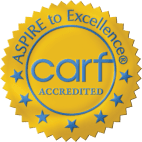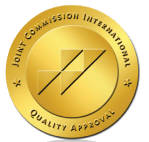Structure.
It is a term that is used often in foster care, right from the first MAPP class and all along. There’s good reason, too. Humans thrive on structure- a predictable routine and environment of known factors. For children and youth who have experienced countless changes and trauma, structure helps reset the brain and allow it to regulate emotions, learning, and expectations.
That’s all fine and well, but if you’re new to the world of foster care, what does it mean?
As a Homefinder, I don’t have the boots on the ground experience to be an expert, so I turned to those who live it and love it: foster parents. Below, please find the top suggestions for what structure looks like in their homes and how it helps.
-
Routines (With Some Wiggle Room)
Being a foster parent means adapting time and time again. Have plans A, B, C, and maybe even D lined up, because an unexpected visit, school meeting, or behavior can pop up any time. But have a plan and communicate it. Wake up time, meal times, school and study times, play times, and bedtimes are all helpful for ALL ages. For kiddos who have often not had notice of upcoming changes, this lends predictability to the day and lets them feel secure if what is going to happen next.
-
Communicate the Plan
It’s great for you to know the plan (you’re leading the charge!), but the troops need to know, too! Kids learn all different ways. Receptive language, the part of our brain that hears, interprets, and remembers information that is said to us is often impaired when children and youth are processing grief, loss, and trauma. That means that kids in care often do better with visual cues. Setting up a daily schedule with pictures can be helpful! Remember, think stage not age with your crew. They may be ten, but internally they may be at a younger developmental stage, so meet them where they are and communicate in a way that makes sense to their brains. For older kids or kids who have more advanced reading/writing skills, get them a personal agenda and have them write in appointments and look over the plan for the day together.
-
Reminders
Reminders about upcoming transitions (“When the timer goes off, we are going to wash our hands and get ready for dinner”), about where you will be going and who will be there (“You have a visit at 4PM today and your mom will be there”), and about expectations (“When we get to the doctor’s office, we all need to wear our masks, and we need to hold hands in the parking lot”) are important. Don’t overload reminders. If you’re doing something at the end of the week, there’s no real need to discuss it at length on Monday. That might add anxiety. Keep it short, realistic, and clear. Kids can be successful when they know what is expected!
-
Choices
Kiddos in care are not given many options. Adults and powers that be dictate where they live, where they go to school, and other areas of life, like therapy they will receive. Give choices where you can. Keep it age and stage appropriate and limit it to two or three options. Think lunch options, clothing options, a choice of a recreational activity, even a choice regarding a consequence if things didn’t go very well. This allows kids to feel empowered and connected to their lives. It creates structure because you are paving the way for appropriate choices.
-
You!
Being someone a kiddo can count on, predict, and trust is possibly the most important structure and stability a child can ask for. Responding in a safe, predictable manner when they come to you with a need or are dysregulated teaches a child or youth how to manage difficulties and big emotions. Following through with promises and plans, or apologizing/acknowledging when things don’t go as planned (and that will happen) proves that you are someone who can be trusted. Treating a child or youth with respect for their unique personalities, histories, qualities, and needs reinforces that they can rely on you to keep them physically, emotionally, academically, and mentally safe.
Structure isn’t so rigid it can’t adapt. It isn’t punitive or militaristic. Structure creates safe guidelines to know what to expect and what is expected.
Defining structure means you can look at your current life, your routines, and your actions to assess what would need to grow and shift in order to provide quality foster care for a child or youth. The key element to healing is having a safe environment in which to do so. You are the key to that environment!
Have questions? Reach out to us! We’re always here to help.













